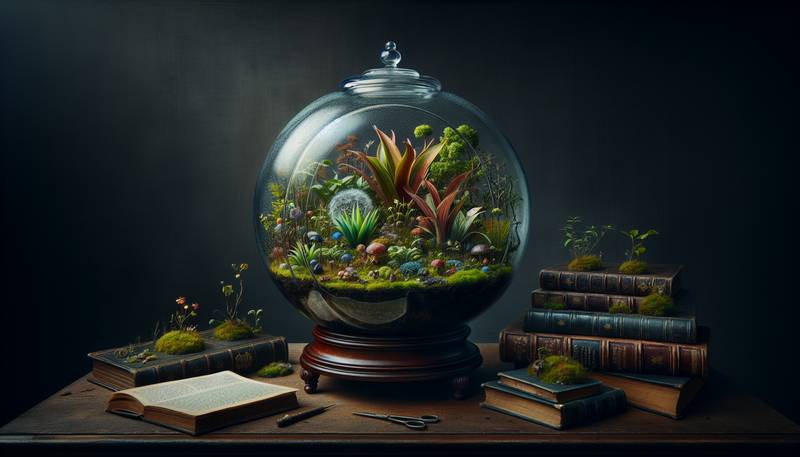Creating Miniature Worlds: A Terrarium Project

A Brief History of TerrariumsThe concept of the terrarium dates back to Victorian times when Dr. Nathaniel Bagshaw Ward accidentally discovered that his plants thrived in a sealed glass container. Oddly enough, his initial purpose for the container was to study moths. In true serendipitous fashion, he discovered that plants could flourish in a controlled environment, protected from the pollution, and the concept of the Wardian Case was born.These days, the terrarium has evolved into not only a way to grow plants but also a form of artistic expression. People tap into their inner landscape architects and create miniature worlds filled with plants, figurines, and other delightful accessories. But where do you begin with such a project? Fear not, for I am here to guide you on this fantastical journey.Choosing Your Terrarium VesselFirst and foremost, one needs a vessel to house their miniature world. From fish tanks to old-fashioned apothecary jars, the options are vast. However, the two main types are the closed and open terrariums. Closed terrariums create a self-sustaining ecosystem, as moisture evaporates and condenses on the walls of the container, creating a miniature water cycle. Open terrariums, on the other hand, allow for greater air circulation and offer more control over the environment inside.The choice between the two ultimately boils down to the type of plants you wish to house and your level of commitment to this tiny world. Closed terrariums are better suited for moisture-loving plants like ferns, while open terrariums can accommodate succulents and cacti.Gathering Your Terrarium MaterialsOnce you have selected your terrarium vessel, gather your materials. You will need: - A layer of pebbles or gravel for drainage
- Activated charcoal to keep the soil fresh
- Potting soil appropriate for your chosen plants
- Small plants or cuttings
- Decorative elements, such as figurines, crystals, or shells
Now that you have your materials, we can begin the step-by-step process of constructing your terrarium.Step 1: Preparing Your VesselFirst, ensure your vessel is clean and dry. While a thin layer of dust might add to the charm of your miniature world, unwanted debris could disrupt the delicate ecosystem. Once your container is ready, add a layer of pebbles or gravel to the bottom, about an inch or two deep, to provide drainage and prevent the soil from becoming waterlogged.Step 2: Adding the Charcoal and SoilNext, sprinkle a thin layer of activated charcoal over the pebbles. This will help to keep the soil fresh and prevent mold and bacteria from forming. Then, add a layer of potting soil on top of the charcoal. The soil should be deep enough to accommodate the roots of your plants, generally a couple of inches.Step 3: Planting Your FloraNow comes the fun part: planting your chosen flora. To start, create small holes in the soil where you want your plants to go. Carefully remove the plants from their pots and gently shake off any excess soil from the roots. Place them into the holes you've created and gently pat the soil around them to secure.When selecting plants, consider their size and growth habits. Will they remain small and compact, or will they grow and spread? The latter may require some pruning or removal, so choose wisely.Step 4: Adding Decorative ElementsFinally, add your decorative elements. These can be anything from tiny figurines, crystals, and shells to small pieces of driftwood and moss. The only limit is your imagination. Arrange these elements in a way that complements your plants and enhances the overall aesthetic of your miniature world.Step 5: Caring for Your TerrariumNow that your terrarium is complete, it's time to consider its care. Closed terrariums require minimal watering, as the moisture trapped within will circulate in a cycle. Open terrariums will need more frequent watering, but not too much, or your plants may become waterlogged. Be sure to monitor your terrarium regularly and adjust your care accordingly.As for sunlight, most terrarium plants require indirect light to thrive. Place your terrarium near a window with filtered light or under a grow light if necessary. Rotate the terrarium occasionally to ensure all plants receive equal amounts of light.Final ThoughtsCreating a terrarium is a delightful project that allows you to explore your creativity and cultivate a deeper connection with nature. By crafting a miniature world, you become the curator of your very own ecosystem, responsible for its care and maintenance. Allow your imagination to run wild, and remember to enjoy the journey as much as the destination.
|
|







